-
EXECUTIVE SUMMARY
-
MARKET INTRODUCTION
-
Definition
-
Scope of the Study
- Research
- Assumptions
- Limitations
-
Objective
-
3.
-
RESEARCH METHODOLOGY
-
Overview
-
Data Mining
-
Secondary Research
-
Primary Research
- Primary
- Breakdown of Primary
-
Interviews and Information Gathering Process
-
Respondents
-
Forecasting Model
-
Market Size Estimation
- Bottom-Up Approach
- Top-Down Approach
-
3.7.
-
Data Triangulation
-
Validation
-
MARKET DYNAMICS
-
Overview
-
Drivers
-
Restraints
-
4.4.
-
Opportunities
-
MARKET FACTOR ANALYSIS
-
Value Chain Analysis
-
Porter’s Five Forces Analysis
- Bargaining Power
- Bargaining Power of Buyers
- Threat
- Threat of Substitutes
- Intensity
-
of Suppliers
-
of New Entrants
-
of Rivalry
-
COVID-19 Impact Analysis
- Market Impact
- Regional Impact
- Opportunity and Threat
-
Analysis
-
Analysis
-
GLOBAL TAGS MARKET, BY MATERIAL TYPE
-
Overview
-
Plastic
-
Paper
-
Fibers
-
6.5.
-
Others (Metal, etc.)
-
GLOBAL TAGS MARKET, BY TAGS TYPE
-
7.1.
-
Overview
-
RFID Tag
-
Hang/Swing Tag
-
7.4.
-
Loop Tag
-
GLOBAL TAGS MARKET, BY END-USE
-
Overview
-
Food & Beverage
-
Clothing & Apparels
-
Hospitality & Travel
-
Beauty & Personal Care
-
Consumer Electronics
-
Others
-
GLOBAL TAGS MARKET,
-
BY REGION
-
Overview
-
North America
- Canada
-
9.1.1.
-
US
-
Europe
- Germany
- France
- UK
- Italy
- Rest of Europe
-
9.2.5.
-
Spain
-
Asia-Pacific
- India
- Japan
- South Korea
- Australia
- Rest of Asia-Pacific
- Middle East
- Africa
- Latin America
-
9.3.1.
-
China
-
9.4.
-
Rest of the World
-
COMPETITIVE LANDSCAPE
-
Overview
-
Competitive Analysis
-
Market Share Analysis
-
Major Growth Strategy in the Global Tags Market,
-
Competitive
-
Benchmarking
-
Leading Players in Terms of Number of Developments
-
in the Global Tags Market,
-
Key developments and Growth Strategies
- New Product Launch/Service Deployment
- Merger
- Joint Ventures
-
& Acquisitions
-
Major Players
- Sales & Operating Income, 2022
- Major Players R&D Expenditure. 2022
-
Financial Matrix
-
COMPANY PROFILES
-
Zebra Technologies Corp.
- Company Overview
- Financial Overview
- Products Offered
- SWOT Analysis
- Key Strategies
-
11.1.4.
-
Key Developments
-
Honeywell International
- Company Overview
- Financial Overview
- Products Offered
- SWOT Analysis
- Key Strategies
-
11.2.4.
-
Key Developments
-
Sato Holdings Corp
- Company Overview
- Products Offered
- Key Developments
- SWOT Analysis
- Key Strategies
- Company Overview
- Financial
- Products Offered
- Key Developments
- SWOT Analysis
- Key Strategies
- Company Overview
- Financial
- Products Offered
- Key Developments
- SWOT Analysis
- Key Strategies
- Company Overview
- Products Offered
- Key Developments
- SWOT Analysis
- Key Strategies
- Company Overview
- Financial
- Products Offered
- Key Developments
- SWOT Analysis
- Key Strategies
- Company Overview
- Financial Overview
- Products Offered
- Key Developments
- Key Strategies
-
11.3.2.
-
Financial Overview
-
11.4.
-
Finotex USA Corp
-
Overview
-
11.5.
-
CCL Industries Inc.
-
Overview
-
11.6.
-
Pacific Coats Bach Label Inc.
-
11.6.2.
-
Financial Overview
-
11.7.
-
NXP Semiconductors
-
Overview
-
11.8.
-
Confidex Ltd.
-
11.8.5.
-
SWOT Analysis
-
GAO RFID Inc
- Company Overview
- Financial Overview
- Products Offered
- Key Developments
- Key Strategies
-
11.9.5.
-
SWOT Analysis
-
HID Global Corp.
- Company Overview
- Financial Overview
- Products Offered
- Key Developments
- Key Strategies
-
11.10.5.
-
SWOT Analysis
-
Dortex Werbung
- Company Overview
- Financial Overview
- Products Offered
- Key Developments
- Key Strategies
-
11.11.5.
-
SWOT Analysis
-
Vertrieb GmbH
- Company Overview
- Financial Overview
- Products Offered
- Key Developments
- Key Strategies
-
11.12.5.
-
SWOT Analysis
-
APPENDIX
-
References
-
Related Reports
-
-
LIST
-
OF TABLES
-
GLOBAL TAGS MARKET, SYNOPSIS, 2025-2034
-
TABLE
-
GLOBAL TAGS MARKET, ESTIMATES & FORECAST, 2025-2034 (USD BILLION)
-
GLOBAL TAGS MARKET, BY MATERIAL TYPE, 2025-2034 (USD BILLION)
-
GLOBAL TAGS MARKET, BY TAGS TYPE, 2025-2034 (USD BILLION)
-
TABLE
-
GLOBAL TAGS MARKET, BY END-USE, 2025-2034 (USD BILLION)
-
NORTH
-
AMERICA: TAGS MARKET, BY MATERIAL TYPE, 2025-2034 (USD BILLION)
-
TABLE
-
NORTH AMERICA: TAGS MARKET, BY TAGS TYPE, 2025-2034 (USD BILLION)
-
TABLE
-
NORTH AMERICA: TAGS MARKET, BY END-USE, 2025-2034 (USD BILLION)
-
TABLE
-
US: TAGS MARKET, BY MATERIAL TYPE, 2025-2034 (USD BILLION)
-
TABLE 10
-
US: TAGS MARKET, BY TAGS TYPE, 2025-2034 (USD BILLION)
-
US: TAGS
-
MARKET, BY END-USE, 2025-2034 (USD BILLION)
-
CANADA: TAGS MARKET,
-
BY MATERIAL TYPE, 2025-2034 (USD BILLION)
-
CANADA: TAGS MARKET,
-
BY TAGS TYPE, 2025-2034 (USD BILLION)
-
CANADA: TAGS MARKET, BY
-
END-USE, 2025-2034 (USD BILLION)
-
EUROPE: TAGS MARKET, BY MATERIAL
-
TYPE, 2025-2034 (USD BILLION)
-
EUROPE: TAGS MARKET, BY TAGS TYPE,
-
EUROPE: TAGS MARKET, BY END-USE, 2025-2034
-
(USD BILLION)
-
GERMANY: TAGS MARKET, BY MATERIAL TYPE, 2025-2034
-
(USD BILLION)
-
GERMANY: TAGS MARKET, BY TAGS TYPE, 2025-2034 (USD
-
BILLION)
-
GERMANY: TAGS MARKET, BY END-USE, 2025-2034 (USD BILLION)
-
FRANCE: TAGS MARKET, BY MATERIAL TYPE, 2025-2034 (USD BILLION)
-
FRANCE: TAGS MARKET, BY TAGS TYPE, 2025-2034 (USD BILLION)
-
FRANCE: TAGS MARKET, BY END-USE, 2025-2034 (USD BILLION)
-
TABLE
-
ITALY: TAGS MARKET, BY MATERIAL TYPE, 2025-2034 (USD BILLION)
-
TABLE
-
ITALY: TAGS MARKET, BY TAGS TYPE, 2025-2034 (USD BILLION)
-
TABLE 12
-
ITALY: TAGS MARKET, BY END-USE, 2025-2034 (USD BILLION)
-
SPAIN:
-
TAGS MARKET, BY MATERIAL TYPE, 2025-2034 (USD BILLION)
-
SPAIN:
-
TAGS MARKET, BY TAGS TYPE, 2025-2034 (USD BILLION)
-
SPAIN: TAGS
-
MARKET, BY END-USE, 2025-2034 (USD BILLION)
-
UK: TAGS MARKET,
-
BY MATERIAL TYPE, 2025-2034 (USD BILLION)
-
UK: TAGS MARKET, BY
-
TAGS TYPE, 2025-2034 (USD BILLION)
-
UK: TAGS MARKET, BY END-USE,
-
REST OF EUROPE: TAGS MARKET, BY MATERIAL
-
TYPE, 2025-2034 (USD BILLION)
-
REST OF EUROPE: TAGS MARKET, BY
-
TAGS TYPE, 2025-2034 (USD BILLION)
-
REST OF EUROPE: TAGS MARKET,
-
BY END-USE, 2025-2034 (USD BILLION)
-
ASIA-PACIFIC: TAGS MARKET,
-
BY MATERIAL TYPE, 2025-2034 (USD BILLION)
-
ASIA-PACIFIC: TAGS
-
MARKET, BY TAGS TYPE, 2025-2034 (USD BILLION)
-
ASIA-PACIFIC:
-
TAGS MARKET, BY END-USE, 2025-2034 (USD BILLION)
-
JAPAN: TAGS
-
MARKET, BY MATERIAL TYPE, 2025-2034 (USD BILLION)
-
JAPAN: TAGS
-
MARKET, BY TAGS TYPE, 2025-2034 (USD BILLION)
-
JAPAN: TAGS MARKET,
-
BY END-USE, 2025-2034 (USD BILLION)
-
CHINA: TAGS MARKET, BY MATERIAL
-
TYPE, 2025-2034 (USD BILLION)
-
CHINA: TAGS MARKET, BY TAGS TYPE,
-
CHINA: TAGS MARKET, BY END-USE, 2025-2034
-
(USD BILLION)
-
INDIA: TAGS MARKET, BY MATERIAL TYPE, 2025-2034
-
(USD BILLION)
-
INDIA: TAGS MARKET, BY TAGS TYPE, 2025-2034 (USD
-
BILLION)
-
INDIA: TAGS MARKET, BY END-USE, 2025-2034 (USD BILLION)
-
AUSTRALIA: TAGS MARKET, BY MATERIAL TYPE, 2025-2034 (USD BILLION)
-
AUSTRALIA: TAGS MARKET, BY TAGS TYPE, 2025-2034 (USD BILLION)
-
AUSTRALIA: TAGS MARKET, BY END-USE, 2025-2034 (USD BILLION)
-
SOUTH KOREA: TAGS MARKET, BY MATERIAL TYPE, 2025-2034 (USD BILLION)
-
SOUTH KOREA: TAGS MARKET, BY TAGS TYPE, 2025-2034 (USD BILLION)
-
SOUTH KOREA: TAGS MARKET, BY END-USE, 2025-2034 (USD BILLION)
-
REST OF ASIA-PACIFIC: TAGS MARKET, BY MATERIAL TYPE, 2025-2034
-
(USD BILLION)
-
REST OF ASIA-PACIFIC: TAGS MARKET, BY TAGS TYPE,
-
REST OF ASIA-PACIFIC: TAGS MARKET, BY
-
END-USE, 2025-2034 (USD BILLION)
-
REST OF THE WORLD: TAGS MARKET,
-
BY MATERIAL TYPE, 2025-2034 (USD BILLION)
-
REST OF THE WORLD:
-
TAGS MARKET, BY TAGS TYPE, 2025-2034 (USD BILLION)
-
REST OF THE
-
WORLD: TAGS MARKET, BY END-USE, 2025-2034 (USD BILLION)
-
MIDDLE
-
EAST: TAGS MARKET, BY MATERIAL TYPE, 2025-2034 (USD BILLION)
-
TABLE 47
-
MIDDLE EAST: TAGS MARKET, BY TAGS TYPE, 2025-2034 (USD BILLION)
-
TABLE
-
MIDDLE EAST: TAGS MARKET, BY END-USE, 2025-2034 (USD BILLION)
-
TABLE
-
AFRICA: TAGS MARKET, BY MATERIAL TYPE, 2025-2034 (USD BILLION)
-
TABLE
-
AFRICA: TAGS MARKET, BY TAGS TYPE, 2025-2034 (USD BILLION)
-
TABLE 51
-
AFRICA: TAGS MARKET, BY END-USE, 2025-2034 (USD BILLION)
-
LATIN
-
AMERICA: TAGS MARKET, BY MATERIAL TYPE, 2025-2034 (USD BILLION)
-
TABLE
-
LATIN AMERICA: TAGS MARKET, BY TAGS TYPE, 2025-2034 (USD BILLION)
-
TABLE
-
LATIN AMERICA: TAGS MARKET, BY END-USE, 2025-2034 (USD BILLION)
-
LIST
-
OF FIGURES
-
RESEARCH PROCESS
-
MARKET STRUCTURE
-
FOR THE GLOBAL TAGS MARKET
-
MARKET DYNAMICS FOR THE GLOBAL TAGS
-
MARKET
-
GLOBAL TAGS MARKET, SHARE (%), BY MATERIAL TYPE, 2022
-
GLOBAL TAGS MARKET, SHARE (%), BY TAGS TYPE, 2022
-
FIGURE
-
GLOBAL TAGS MARKET, SHARE (%), BY END-USE, 2022
-
GLOBAL TAGS
-
MARKET, SHARE (%), BY REGION, 2022
-
NORTH AMERICA: TAGS MARKET,
-
SHARE (%), BY REGION, 2022
-
EUROPE: TAGS MARKET, SHARE (%), BY
-
REGION, 2022
-
ASIA-PACIFIC: TAGS MARKET, SHARE (%), BY REGION,
-
REST OF THE WORLD: TAGS MARKET, SHARE (%), BY REGION,
-
GLOBAL TAGS MARKET: COMPANY SHARE ANALYSIS, 2022 (%)
-
ZEBRA TECHNOLOGIES CORP.: FINANCIAL OVERVIEW SNAPSHOT
-
ZEBRA TECHNOLOGIES CORP.: SWOT ANALYSIS
-
HONEYWELL
-
INTERNATIONAL: FINANCIAL OVERVIEW SNAPSHOT
-
HONEYWELL INTERNATIONAL:
-
SWOT ANALYSIS
-
SATO HOLDINGS CORP: FINANCIAL OVERVIEW SNAPSHOT
-
SATO HOLDINGS CORP: SWOT ANALYSIS
-
SATO HOLDINGS
-
CORP: FINANCIAL OVERVIEW SNAPSHOT
-
SATO HOLDINGS CORP: SWOT
-
ANALYSIS
-
FINOTEX USA CORP.: FINANCIAL OVERVIEW SNAPSHOT
-
FINOTEX USA CORP.: SWOT ANALYSIS
-
CCL INDUSTRIES
-
INC.: FINANCIAL OVERVIEW SNAPSHOT
-
CCL INDUSTRIES INC.: SWOT
-
ANALYSIS
-
PACIFIC COATS BACH LABEL INC.: FINANCIAL OVERVIEW
-
SNAPSHOT
-
PACIFIC COATS BACH LABEL INC.: SWOT ANALYSIS
-
NXP SEMICONDUCTORS: FINANCIAL OVERVIEW SNAPSHOT
-
FIGURE 28
-
NXP SEMICONDUCTORS: SWOT ANALYSIS
-
CONFIDEX LTD.: FINANCIAL
-
OVERVIEW SNAPSHOT
-
CONFIDEX LTD.: SWOT ANALYSIS
-
FIGURE
-
GAO RFID INC: FINANCIAL OVERVIEW SNAPSHOT
-
GAO RFID INC:
-
SWOT ANALYSIS
-
HID GLOBAL CORP.: FINANCIAL OVERVIEW SNAPSHOT
-
HID GLOBAL CORP.: SWOT ANALYSIS
-
DORTEX WERBUNG:
-
FINANCIAL OVERVIEW SNAPSHOT
-
DORTEX WERBUNG: SWOT ANALYSIS
-
VERTRIEB GMBH: FINANCIAL OVERVIEW SNAPSHOT
-
FIGURE 38
-
VERTRIEB GMBH: SWOT ANALYSIS

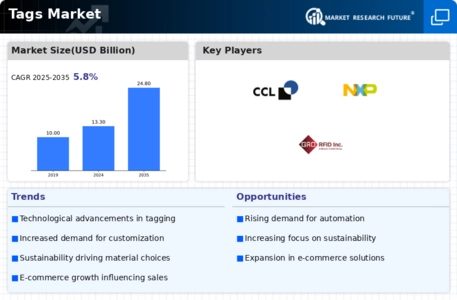
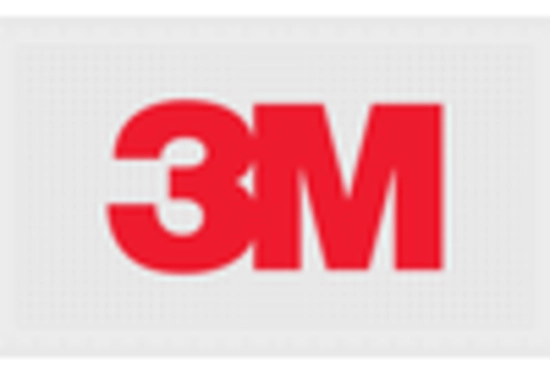
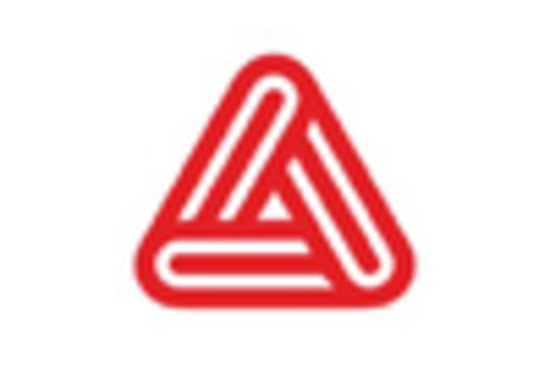
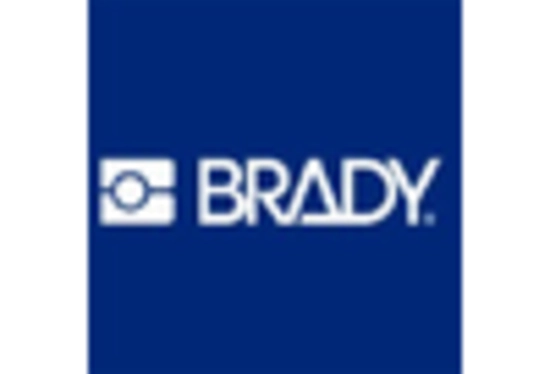
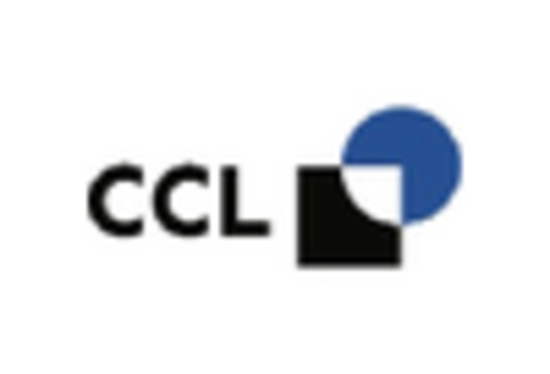
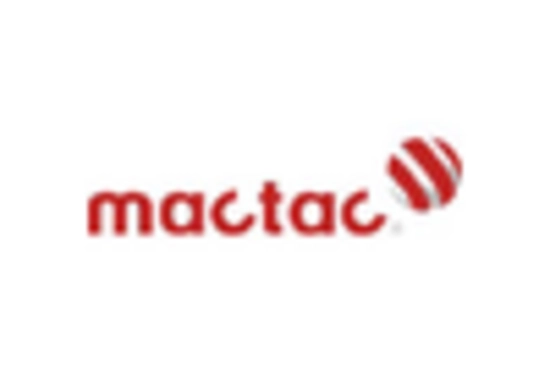
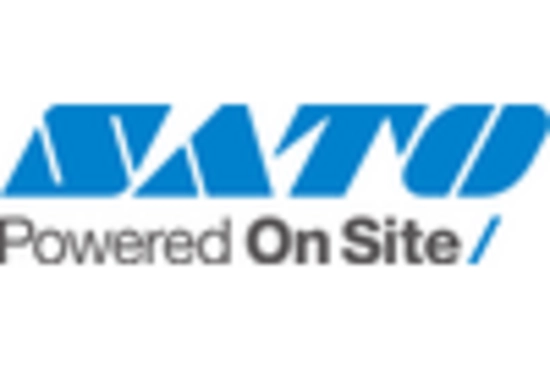

Leave a Comment